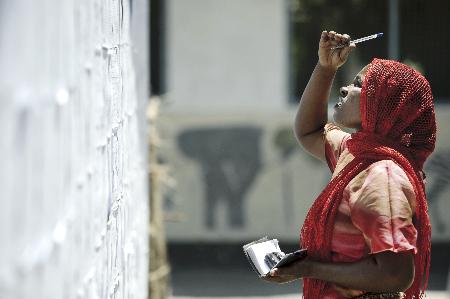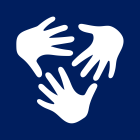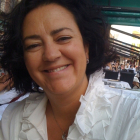A second update of the European Union’s Plan of Action for Gender Equality and Women's Empowerment in Development 2010-2015 was presented to the European Council in December, and shows that while progress has been made, important challenges persist. Jean Louis Ville, Head of Unit at EuropeAid’s Governance, Democracy, Gender and Human Rights, and Marina Marchetti, EuropeAid's Head of Sector for Gender and Non-Discrimination, provide their viewpoints on the results.
The Plan of Action for Gender Equality and Women's Empowerment in Development, or more simply, The Gender Action Plan (GAP), is a five-year common exercise that requires yearly reporting from European Commission, the European External Action Service, Member States and EU Delegations. Requested by the European Development Council in 2010, the GAP contains 9 objectives, 37 actions and 53 indicators, which the parties are committed to implement and report on to assess worldwide progresses in the matter of gender. Information is gathered in Brussels, formalised and sent to the Council for approval.

“It was quite challenging in terms of collecting the data, but we had made some improvements, “ said Jean-Louis Ville, Europe Aid’s Head of Unit for Governance, Democracy, Gender and Human Rights, noting that data for this report came from 93 delegations, compared to 80 in 2011. “[The report] showed a number of progresses," he continued, "but what I basically would say is that it shows what we already know, and that is mainstreaming in terms of gender is the main challenge to address in development cooperation.”
Gender, Mr Ville stressed, is not simply a women’s issue, but a matter of equality and a matter of rights. The basic concept involves equal access to various rights and equal opportunities for any person, male or female, without discrimination. “This may sound obvious when we say it sitting here comfortably in Brussels, but when you talk about implementing a project in the field, it doesn’t necessarily come into everyone’s mind,” he said.
His concern is that while the majority of development practitioners are aware of the close link between gender inequality and poverty, they don’t transform gender actions into their projects. “A gender dimension should be included in all the policies that we have, whatever the thematic,” he said. He gave a simple example of placing equal access water pumps in village locations that are safe for women, where the risk of assault is lesser than in a remote place.
Mr Ville said that training is required to raise colleagues’ awareness of gender issues, so that it becomes a natural part of project design, with objectives and indicators that allow the real impact of gender initiatives to be assessed. “By asking to put specific indicators into a project, people will raise the gender question, and find where the gender dimension can be included,” he explained.
Marina Marchetti, EuropeAid's Head of Sector for Gender and Non-Discrimination, said that different tools are available at every stage of the program and project cycle management, and advised colleagues to create a Gender Country Profile right from the beginning of a project cycle. This, she said, is "a very useful" tool that aims to facilitate integration of Gender Equality and Women's Empowerment (GEWE) in sector programmes and projects. Gender Country Profiles are in preparation, are underway, or have been finished in 29 EU Delegations.
Ms Marchetti also recommended using a gender screening check list for the quality support process, and she promoted the use of Gender Markers to define the extent to which a project is gender-sensitive.
Currently, on-line training is available to support colleagues dealing with gender issues. It comprises of two levels, with on-line tutoring being made available periodically. Face-to-face trainings are also available to delegations upon request, with five foreseen to take place in 2013. Invitations to apply will be sent to delegations in the coming months. Finally, colleagues can refer to a toolkit for mainstreaming gender equality in EC development cooperation.
The 2012 GAP update reports that notable progress has been made in the area of political dialogue on gender equality with partner countries. This now takes place in many more countries (61) than reported last year (38) and it is also on the agenda in sector and macro policy dialogues in an increasing number of countries (from 32 to 48). The report also indicates that gender equality is gradually being included in sector programmes beyond the traditional health and education sectors (private sector development, infrastructure, food security, climate change), both by Member States and EU Delegations.
“But there is still a lot to do, “ said Jean-Louis Ville. “We are lagging behind in terms of mainstreaming, compared to other donors in the world.”
Please visit the capacity4dev.eu Gender Topic where many of the main EC documents on gender are available.
Please also read a blog by EuropeAid's Director of Human and Society Development, Kristian Schmidt on the occasion of International Women's Day 2013.
Visit the Public Group on Gender for more information. You can watch a video interview with Veronique Arnault, EEAS' Director of Human Rights and Democracy,and a video interview with Fatiha Hassouni, Programme Officer for Civil Society at the EU Delegation to Morocco, for their views on current gender issues. Both were filmed last week in Brussels at the European Instrument for Democracy and Human Rights EIDHR seminar.
This collaborative piece was drafted with input from Jean-Louis Ville, Marina Marchetti and Virginie Ramey, with support from the capacity4dev.eu Coordination Team.


Log in with your EU Login account to post or comment on the platform.